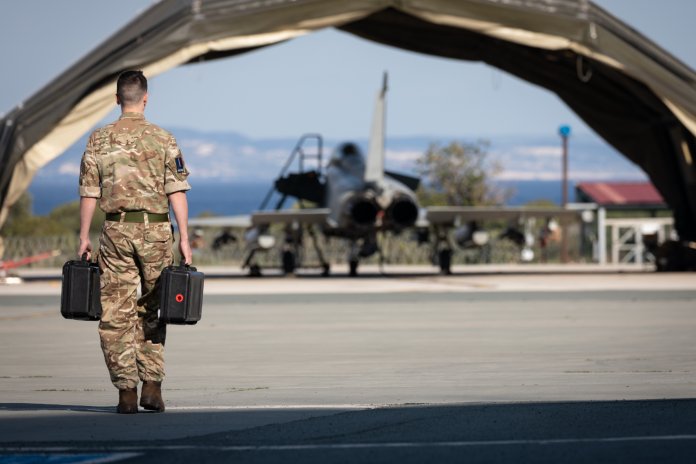
The United Kingdom’s Royal Air Force is bringing in new platforms to continue its airborne Intelligence, Surveillance and Reconnaissance (ISR) capability, a skill developed from rudimentary beginnings at the end of the First World War
One could easily write two quite different articles about British airborne Intelligence, Surveillance and Reconnaissance (ISR) capabilities. One article would paint a very negative picture – describing sweeping cutbacks and the wholesale loss of capabilities – while the other would be more positive, highlighting some high-profile acquisitions and some promising new future technologies. The truth lies somewhere between the two.
Reconnaissance was one of the earliest roles for the military aeroplane, and the Royal Air Force (RAF) has been in the recce game since its formation in 1918, initially undertaking simple visual observation of enemy targets, and subsequently providing a primarily photographic reconnaissance product. The Second World War saw an expansion into various types of Signals Intelligence (SIGINT) but the emphasis remained on photography – with tactical or fighter reconnaissance usually carried out at low level by armed aircraft, and with high altitude unarmed aircraft conducting more strategic operations.
During the Cold War, the Supermarine Spitfires used for tactical reconnaissance gave way to Gloster Meteor FR.Mk9s, Supermarine Swift FR.Mk5s, Hawker Hunter FR.Mk10s, augmented by tactically-configured English Electric Canberras, and later being replaced by recce-pod carrying McDonnell Douglas F4 Phantoms, SEPCAT Jaguars and latterly Panavia Tornados. The high altitude Spitfire PR.Mk19 and de Havilland Mosquito PR.Mk34 gave way to Canberras, Handley Page Valiants and Victors.
New Long Range Oblique Photography (LOROP) cameras allowed reconnaissance aircraft to ‘look’ far off track, allowing them to gather imagery of a target without directly over-flying it. This allowed aircraft to ‘look’ far over an enemy border, for example. The post war period also saw radar being used for reconnaissance, and especially for reconnoitring potential routes for the V-bombers, which would then use their own radar to find their way to the target.
But the reconnaissance role was not simply about the aircraft platforms, nor even about the long focal length lenses fitted to the cameras they carried, nor the new sensors deployed.
A whole infrastructure of processing and photographic interpretation was established and refined, such that after landing, film would be rushed to a waiting Air Transportable Reconnaissance Exploitation Laboratory (ATREL) complex of mobile cabins housing aircrew debriefing facilities, and equipment capable of very rapid wet processing of high-resolution film, with motorised light tables and imagery enhancement equipment to facilitate rapid imagery analysis. Such analysis could even be performed in a hostile NBC environment, producing ‘hot reports’ within 30 minutes of the pilot shutting down his engine(s).
By the end of the Cold War, traditional wet film cameras were increasingly being replaced by electro-optical and infra-red sensors, but great emphasis was still placed on gathering very high quality, high resolution imagery, and reconnaissance remained a largely specialised role.
Traditional photographic reconnaissance reached its zenith in the late 1990s and early 2000s. The RAF’s small fleet of Canberra PR.Mk9s received the Goodrich Rapid Deployment Electro-Optical System (RADEOS), which was derived from the Senior Year Electro-Optical Relay System (SYERS) carried by the Lockheed U-2S, from 1997. The system saw operational service in the Middle East and Afghanistan, and proved capable of very high resolution at extreme range. In images of the Houses of Parliament taken from 47,000ft (14,300m) over the Isle of Wight, the time on Big Ben’s clock could be read clearly.
The Goodrich Reconnaissance Airborne Pod Tornado (RAPTOR) was a podded system based on the similar DB-110 EO sensor (dual-band 110-inch focal length) and was introduced into RAF service in 2002. This allowed images to be recorded for post-flight analysis, displayed in the cockpit or transmitted to a ground station via a data link. A total of eight RAPTOR pods were purchased by the RAF. RAPTOR made its operational debut during Operation Iraqi Freedom in early 2003. RAPTOR was used to provide vital imagery over Iraq and Syria to the coalition partners engaged in Operation Inherent Resolve, and later on Operation Shader.
The Canberra PR.Mk9 was retired on 28 July 2006, and the RAPTOR pod followed when the Tornado was withdrawn from service on 1 April 2019.
UTC Aerospace Systems (which had acquired Goodrich in 2012) offered a similar pod for the Eurofighter Typhoon, using a multi-spectral MS110 sensor, but this was not ordered, and nor was Rafael’s Reccelite XR reconnaissance pod, though this did undergo some trials.
The DB110 was flown on a General Atomics MQ-9 Reaper, and some consideration was given to putting RAPTOR on Reaper or Protector UAVs, but this does not seem to be happening.
Senior RAF officers said that the capabilities provided by RAPTOR were being directly replaced by existing, in-service ISR capabilities, on a range of platforms – including an unidentified ‘wide body’ aircraft and space-based systems.
This does not mean the end of fast jet reconnaissance – the forthcoming Rafael Litening 5 targeting pod could provide the Typhoon with impressive ISR capabilities, while the Lockheed Martin F-35B also has formidable recce potential thanks to its EOTS system, its powerful Northrop Grumman AN/APG-81 AESA radar, its sensor fusion and the high degree of embedded connectivity.
But the ISR emphasis certainly switched away from fast jets, and there was a growing concentration on those capabilities best suited to asymmetric warfare against non state actors like Daesh. This process has continued and intensified – changing the face of UK airborne ISR/ISTAR.
Although the role description of maritime reconnaissance includes the word reconnaissance, maritime patrol aircraft were not traditionally thought of as belonging to the reconnaissance community, since they used their capabilities simply to find their own targets. All that changed during the second Gulf War in 2003, when RAF Hawker Siddeley Nimrods were pressed into use in an overland reconnaissance and surveillance role, supporting land forces, and using their radar, newly fitted Wescam MX-15 electro-optical turrets and comprehensive communications capabilities to identify potential targets and locate and monitor enemy forces. Use of the Nimrod for overland ISR, using the MX-15, reflected the limitations of the Army’s Pilatus Britten Norman Defender, which had relatively poor hot-and-high performance, limited endurance, and which was still heavily tasked in Northern Ireland. Thereafter, the Nimrods were extensively used in the overland ISR role in both Iraq and Afghanistan, and their eventual replacement, the Boeing P-8A Poseidon MRA.Mk1 is today viewed as an ISR aircraft as much as it is a maritime patrol and anti-submarine asset.
The loss of Nimrod XV230 after an inflight fire on 2 September 2006 led to the type’s early withdrawal, and to the introduction of new ISR aircraft types, offering capabilities more finely tuned to the type of operations being flown in the post-Cold War environment.
Raytheon’s Sentinel R.Mk1 was the end result of a long-running programme to field an Airborne Stand-off Radar (ASTOR) with moving target indication and high definition Synthetic Aperture Radar capabilities. Raytheon was eventually contracted to develop a five-aircraft ASTOR system, using Bombardier’s Global Express business jet as the airborne platform and initially basing the mission system on the U-2’s Hughes (now Raytheon) ASARS-2 radar. The Sentinel’s main radar was known as the Sentinel Dual Mode Radar Sensor (DMRS) and is a Raytheon dual-mode synthetic aperture radar/moving target indication (SAR/MTI) radar based on the ASARS-2, and using Active Electronically Scanned Array (AESA) technology. Service trials began in 2007 and an Operational Level Ground Station (OLGS) was deployed to Camp Bastion in Afghanistan in mid-November 2008, with two Sentinel aircraft deploying to Seeb airbase in Oman, from where No. V(AC) Squadron flew the first operational Sentinel R.Mk1 mission on 15 November 2008.
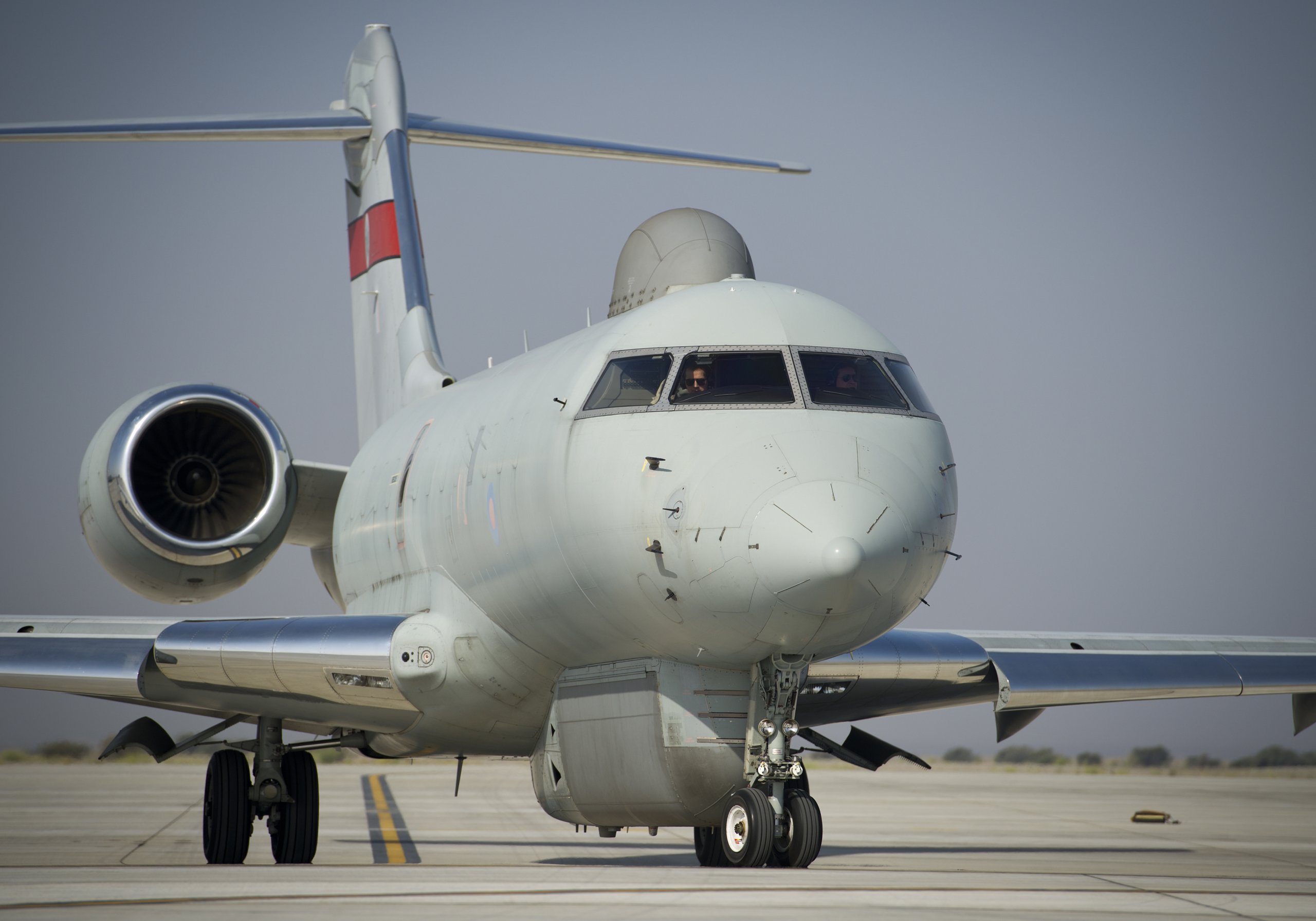
Raytheon also provided six Shadow R.Mk1 ISR aircraft, based on the King Air 350 (and plans are underway to expand the fleet to eight aircraft upgraded to R.Mk2 standards). The RAF officially took delivery of the first of four initial Shadow R.Mk1s in 2009, and these initially operated as a flight of No.V (AC) Squadron, before becoming No.14 Squadron in 2011.
Though the RAF remains coy about the Shadow’s exact equipment fit and capabilities, its state of the art mission equipment was described as including “an under-fuselage electro-optical sensor turret, a variety of integrated sensors and extensive communications capability, managed from operator consoles in the cabin.” The EO sensor is thought to be the same as was fitted to the Nimrod, an L3 Wescam MX-15, an electro-optical/infra red (EO/IR) turret which also incorporates a laser designator. The aircraft also incorporates a forward-looking EO wide-area surveillance (WAS) sensor (which can be used for counter-improvised explosive device work and providing pattern-of-life intelligence).
The Shadow R.Mk1 is also reported to have a Communications Intelligence capability (COMINT) perhaps based on L3’s Spydr combined IMINT/COMINT system, with L3 Rio signals intelligence software, which can monitor a waveband of 20 MHz – 3 GHz, geo-locating emitters, and displaying them on a ‘Google Earth’ style map. Once an emitter has been located, the MX-15 can be used to gather IMINT on the emitter’s user. The Shadow is able to monitor and locate the kinds of communications equipment typically used by insurgent groups.
The concept of operations for the aircraft entails other UK ISR platforms making the initial detection of potential targets, with the Shadow then being tasked to investigate more closely, using its on-board COMINT equipment to detect the target’s emissions, and recording IMINT of the target using the MX-15.
Clarity in Afghanistan
The Shadow’s output was deemed “particularly valuable to ground commanders”, providing their forces with an unprecedented insight into the unique operating environment of Afghanistan. The type’s electro-optical and electronic capabilities were felt to complement those of the Sentinel R.Mk1, allowing analysts to prepare a more comprehensive intelligence product and permitting a more effective and efficient use of combat aircraft, Remotely Piloted Air Systems (RPAS), helicopter-borne forces, and armed reconnaissance vehicles.
It was originally planned that both the Sentinel and the Shadow would be withdrawn from service when operations in Afghanistan ended in 2015. Both aircraft had their service lives extended, and both proved invaluable on Operation Shader, providing ISR over Syria and Iraq. The Sentinel, however, was retired in February 2021, whereas the Shadow gained long term funding and its planned service life was extended, first to 2018 and then through to 2035.
Another ISR aircraft brought into RAF service as a result of the war in Afghanistan was the MQ-9A Reaper. The RAF’s Reaper operation built on the work of No.1115 Flight, which embedded UK personnel in the US Air Forces’s (USAF) Combined Joint Predator Task Force from January 2004, operating the MQ-1 Predator.
This gave the RAF invaluable experience when it began MQ-9A Reaper (Predator B) training in December 2006. No.39 Squadron began operations over Afghanistan in 2007, working out of Creech Air Force Base, Nevada, with an initial six aircraft. Five additional aircraft were procured in 2012 and No.XIII Sqn re-formed on 26 October 2020.
Like Sentinel and Shadow, Reaper had been due for retirement in 2015, but was retained and heavily committed to Operation Shader.
The premature retirement of the Nimrod, and the subsequent collapse of the replacement Nimrod MRA.Mk4 also meant that the options of running on the SIGINT-roled Nimrod R.Mk1s of No.51 Squadron, or replacing them with a derivative of the MRA.Mk4 became untenable.
Rebuilding Airborne ISR
The final BAE Nimrod R.Mk1 sortie was flown in June 2011, and the type was replaced by three Boeing RC-135W Rivet Joint aircraft acquired under the Airseeker project. No.51 Squadron took delivery of the RAF’s first Rivet Joint On 12 November 2013, and flew the first operational sortie on 23 May 2014. Two more aircraft were delivered in August 2015 and June 2017. The aircraft are operated as an extension of the USAF Rivet Joint fleet, ensuring they remain at the cutting edge of capability from the point of view of sensor and system upgrades, though some fear that it may lead to some loss of autonomous national capabilities.
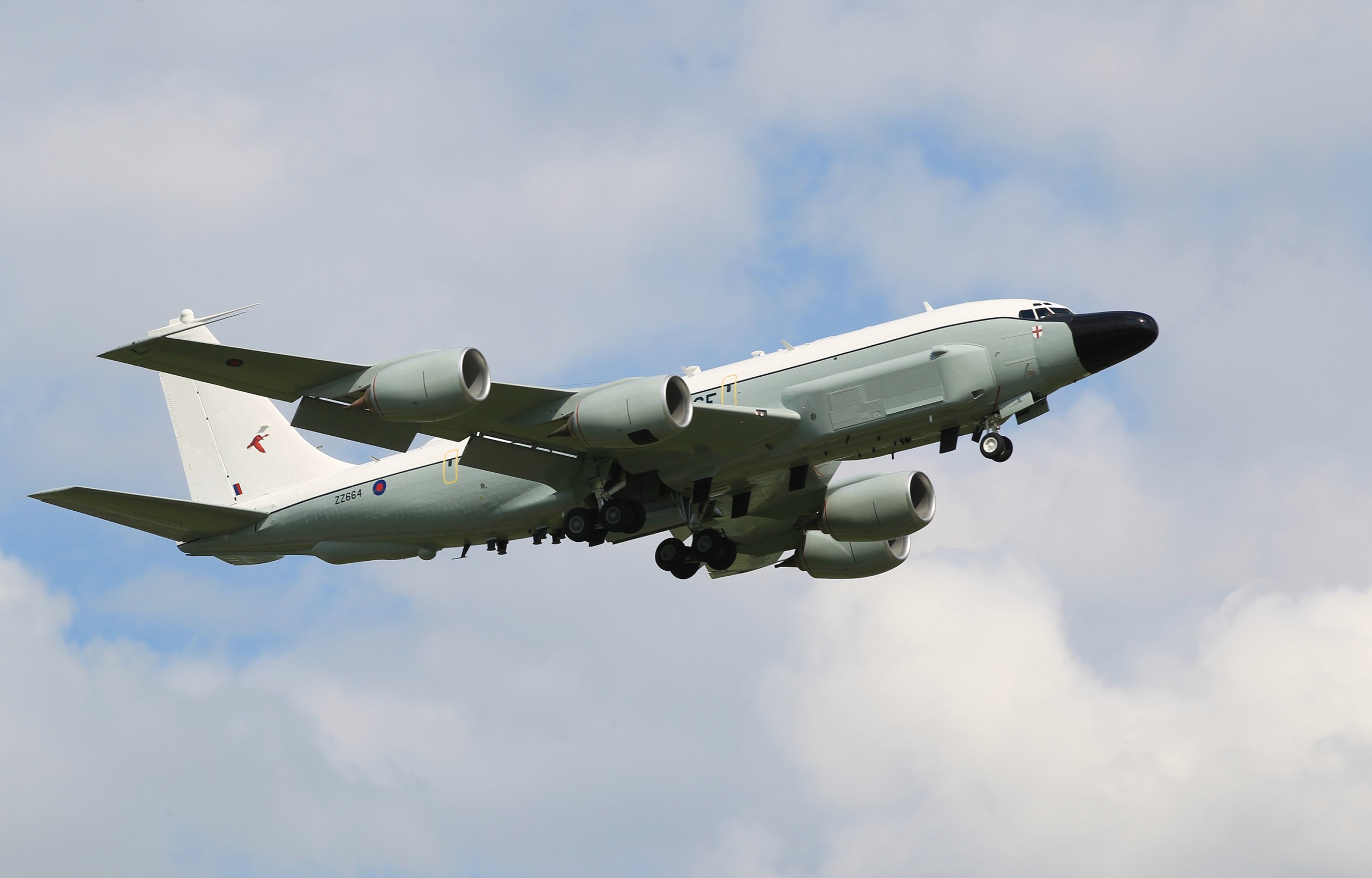
With a more COMINT-heavy emphasis than the old Nimrod R.Mk1, the Rivet Joint is arguably better suited to current ongoing operations and the type has been deployed extensively for Operation Shader. There has been some criticism that some ELINT capabilities have been lost with the change of aircraft.
The RAF ordered nine Poseidon MRA Mk1, and five of these are now in service, operating with No.120 Squadron at RAF Lossiemouth in Scotland. The first of these was delivered on 13 October 2020. But although the P-8 has formidable ISR capabilities, the fleet is small and heavily tasked, and is unlikely to have much capacity for overland ISR missions.
Three Boeing E-7A Wedgetail AEW.Mk1s will join the Poseidons at Lossiemouth, replacing the ageing Boeing E-3D Sentry, which flew its last operational mission on 30 July 2021. The Wedgetail promises to bring expanded ISR capabilities, though the tiny fleet size seems likely to be stretched carrying out its primary Airborne Early Warning and Control (AEW&C) tasking.
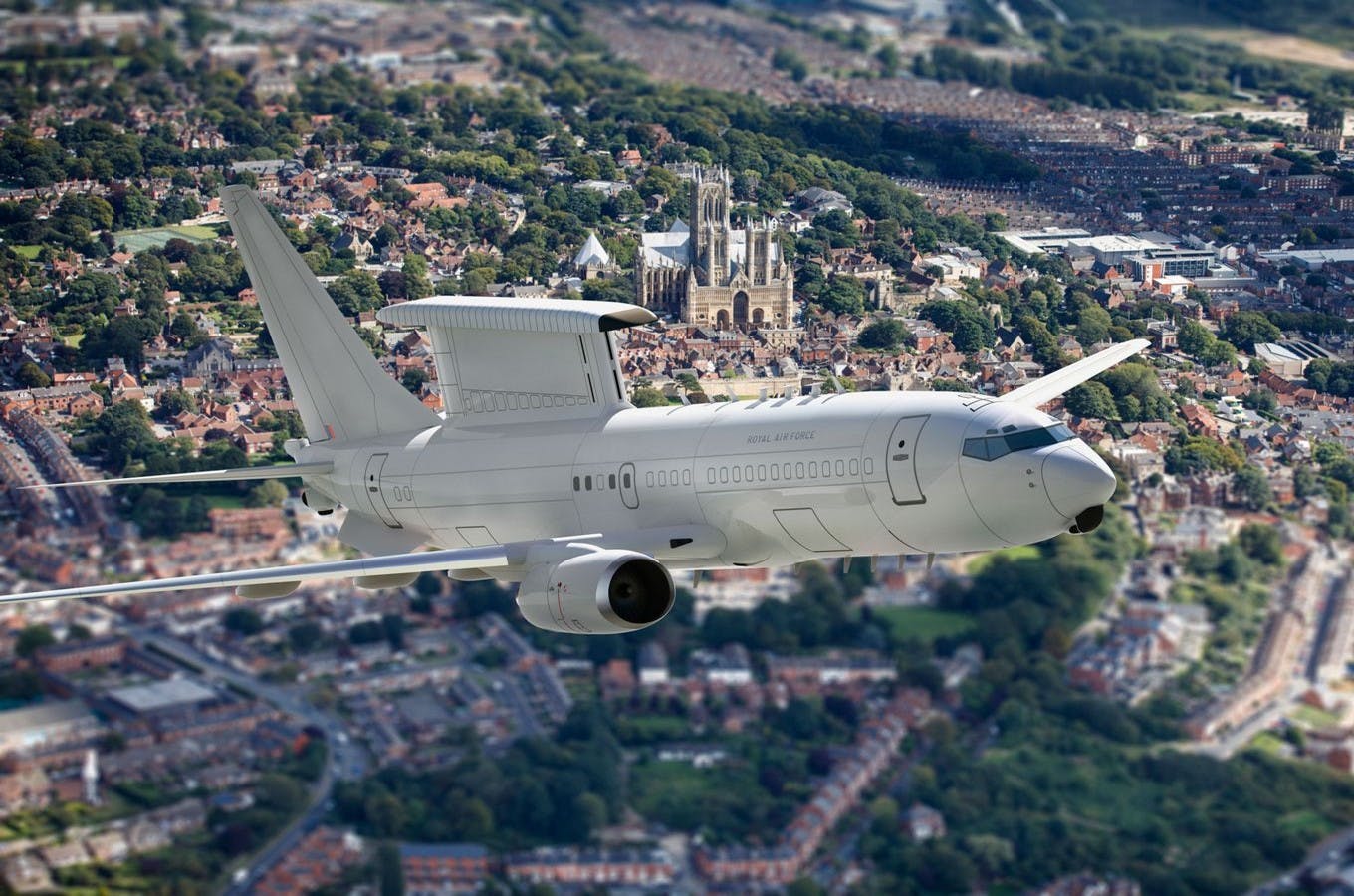
The final new addition to the RAF’s ISR fleet will be an unmanned platform. The 2015 Strategic Defence and Security Review (SDSR) confirmed that a replacement for the Reaper would be acquired, with more than 20 aircraft due to be delivered after 2018.
In April 2016 the MoD announced the selection of the General Atomics MQ-9B as the Protector RG Mk1, to replace the MQ-9A Reaper, for service entry in 2024. Protector represents the next generation of Medium-Altitude, Long Endurance (MALE) remotely-piloted, armed, multi-spectral surveillance aircraft, flying for up to 40 hours.
The Protector was based on the Certifiable Predator B, and the US State Department approval covered the procurement of up to 26 airframes, (16 confirmed and ten options) together with a new Ground Control System (GCS).
Most of the RAF’s ISR aircraft will come under the control of the new RAF Waddington ISTAR Air Wing. Intelligence personnel from 1 ISR Wing are spilt into two flights: Apollo Flight and Crossbow Flight. Apollo Flight comprises intelligence analysts who conduct analysis of current intelligence, while Crossbow Flight comprises imagery analysts who directly support ISTAR aircraft.
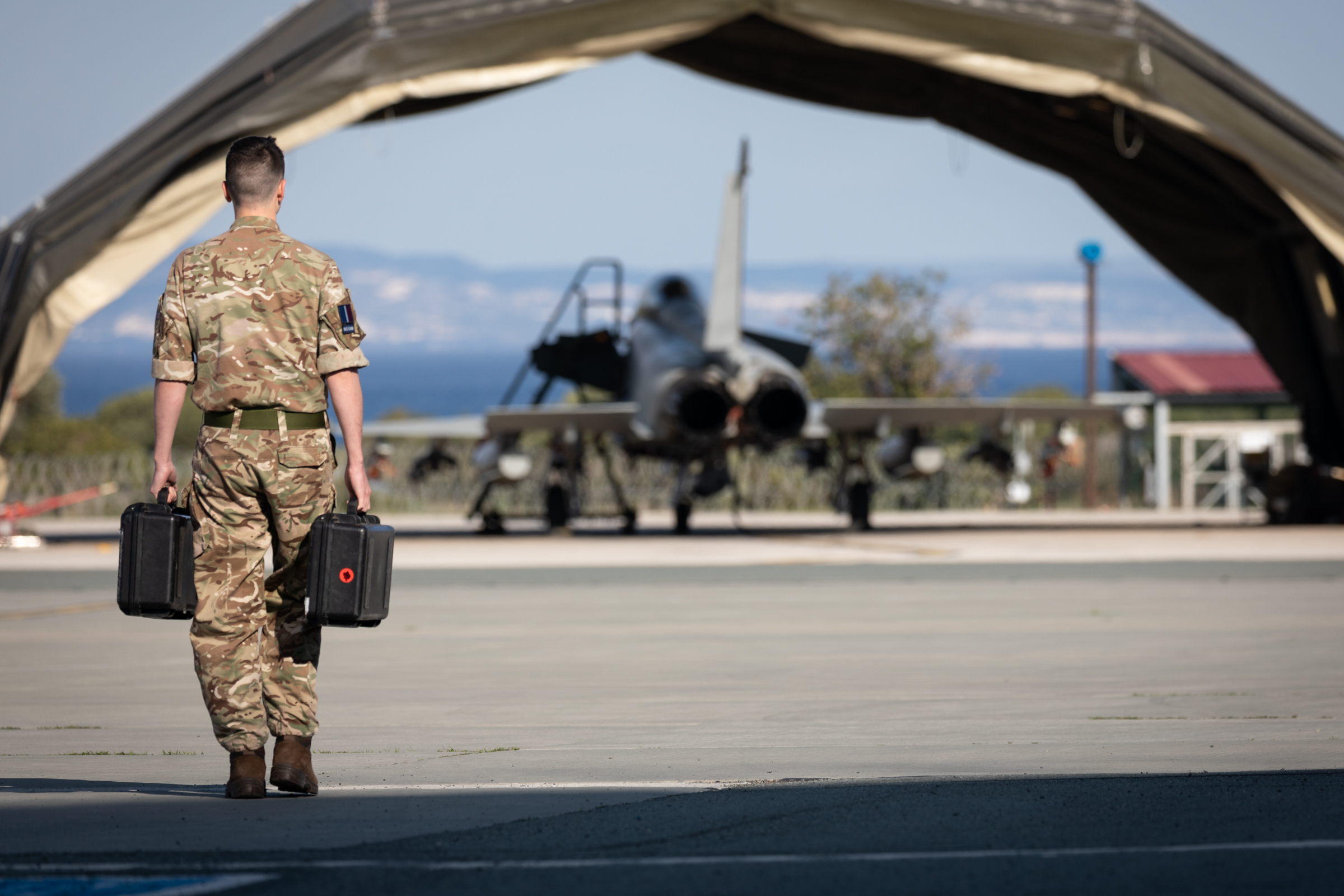
The ISTAR Wing officially stood up on 17 May as part of the RAF Future Operating Model, an initiative steered by the Chief of the Air Staff, Air Chief Marshal Sir Mike Wigston, in an effort to create what he has referred to as the next generation Air Force. The ISTAR Air Wing will comprise the flying squadrons, Air Support Wing, Air Engineering Wing, No.1 Intelligence Surveillance and Reconnaissance Wing and the ISTAR Operational Conversion Unit.
by Jon Lake












